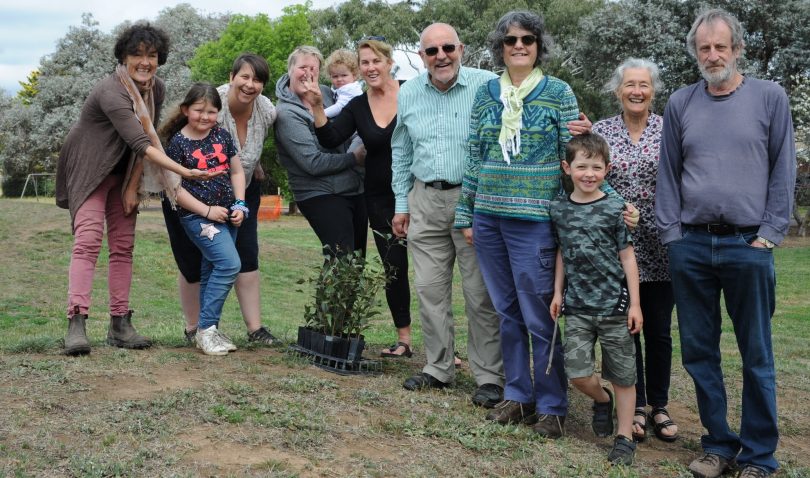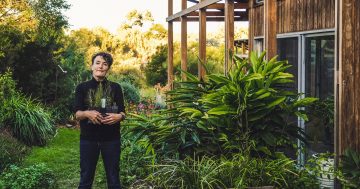
The Climate Factory founder Edwina Robinson (far left) with Downer Community Parkcare group members. Photo: Gary Marshall.
People power is thriving in Canberra, with a campaign to raise at least $20,000 to build a micro-forest at a park in Downer receiving almost half its target in just three days.
The micro-forest is planned for the Cole St park in Downer. It’s a pilot project set up by landscape architect and founder of The Climate Factory Edwina Robinson and the Downer Community Parkcare Group. It’s in response to increasing temperatures in urban areas.
A crowd-funding campaign to fund the micro-forest launched on Tuesday afternoon, and it’s already raised half the target needed to fund the project.
Ms Robinson told Region Media the support for the project shows that people are motivated to take action to improve their local environment.
“What this really shows is that we don’t need to rely on government funding all the time for building ‘green’ infrastructure. We can take a stand and do it ourselves,” she said.
“I think a lot of the community are really ready for this sort of thing and some of the surveys I’d conducted showed that people were willing to donate money.”
Service One, a community-owned bank, kicked off the campaign with a $5000 donation, but Ms Robinson says she would love to see more businesses get involved.
“I know a lot of the people donating live in the area, but we think this is a great opportunity for some of the local businesses to show that they can be socially responsible.”
Downer residents have also banded together to form a neighbourhood group to help plant and maintain the park.
The $20,000 needed to fund the project will make the micro-forest at the Coles Street park in Downer a reality. Contributions will fund a master plan that informs how the community wants to use the park; 1500 native trees, shrubs and groundcovers; soil improvement; and a 1000-litre water cart to help new plants through hot spells.
“We will choose plants that are a low fire risk – plants with low oil content, fleshy leaves and smooth bark,” said Ms Robinson. “We will also trial tree species from hotter, drier climates, like the native evergreen kurrajong sourced from near Gilgandra in north-western NSW.
“The micro-forest will cool the landscape, provide habitat, absorb carbon and increase property values.”
Ms Robinson said the community-funded revegetation model is one that could be applied across Canberra.
“Temperatures in Canberra last summer were up to six degrees above average. Planting trees is one of the simplest things we can do to address hotter, drier climates.”

One of Canberra’s many tree-lined streets. Photo: Michelle Kroll, Region Media.
Studies have found that the ground underneath the canopy of a tree can be between two and 10 degrees cooler than the surrounding area.
The micro-forests also address another issue faced by many parks that are rendered useless by extensive weed problems. One example is the three-cornered-jack which has a prickly seed head that punctures bike tyres and gets stuck in people’s shoes and in dog paws. This weed will be controlled as part of the project.
“The micro-forest mimics natural forests and if you look closely at a natural forest, plants grow closely to one another with little bare soil on the ground.
“We are keen to revegetate a section of the park to include more shade while maintaining plenty of open spaces for play and dog walking.
“We believe that by working together we can reactivate this space, increase community stewardship of the park and build stronger neighbourhood networks,” Ms Robinson said.
A report released by the ACT Government this week found native tree varieties are the best suited to cope with the ACT’s changing climate, with the kurrajong on top of that list.
Ms Robinson is taking that much further with her own mission to reshape Canberra’s canopy by planting 100,000 trees.
“We’ve been blown away by the number of people who have contacted us offering help,” she said.
“Together we can make a difference. The more trees we plant, the healthier and more resilient our communities will be.”
It is hoped the project in Downer will hold its first planting day early next year. More information about the community project at Downer can be found online.




















